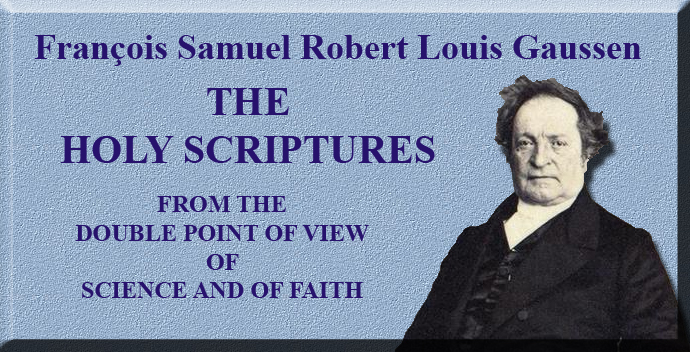
The Holy Scriptures
From the Double Point of View of Science and of Faith
By François Samuel Robert Louis Gaussen
Part First - Canonicity of all Books of the New Testament
Book 1 - Chapter 6
|
HISTORICAL DIVISION OF THE CANON INTO THREE DISTINCT PARTS. 25. WE shall apply the name. of First Canon (or First Rule) to the list of twenty books enumerated above, (prop. 18,) as these were circulated before the others, during the lives of the apostles, and under their immediate care, and at once received by the whole Christian community, both of the Hast and of the West; nor, during the space of eighteen centuries, has either their authenticity or their Divine authority ever been called in question by the churches of Christ. 26. This First Canon, consisting of books never controverted, forms, by itself, eight-ninths of the New Testament, if we reckon by the number of verses; for out of 7959, they contain 7059. 27. We shall give the name of Second Canon (or Second Rule) to the five small and late epistles of James, Peter, Jude, and John, collectively. These books were written shortly before the death of these men of God, and circulated after their decease, at a period of trouble, when their writers were no longer present to attest them. Not being addressed, like the first thirteen epistles of Paul, to individuals or particular churches directed to guard them and make them known, these five brief epistles were at first received only by most, and not by all, ecclesiastical writers and Christian churches, (τοῖς πολλοῖς, τοῖς πλείστοις, says Eusebius.) Some churches hesitating, for a longer or shorter space of time, to acknowledge their Divine authority, they were at length universally received, from the date of the first universal council of the churches of Christ. 28. The second canon, computed by the number of verses, only amounts to the thirty-sixth part of the New Testament; for, out of 7959 verses, it contains only 222, 29. We shall, lastly, give the name of Second-first Canon to two books collectively — the Epistle to the Hebrews and the Apocalypse — as these cannot be placed unrestrictedly either in the first canon or in the second. They cannot be placed in the second, because, from the moment of their appearance, and during the first two centuries of the Church, they were received universally and without opposition. Eusebius, for this reason, classes them with the uncontroverted, (or ὁμολογούμενα.) Neither can they be placed unrestrictedly in the first canon, as, after being generally received, they were subsequently controverted by certain churches for some time; the one book chiefly in the West, and the other chiefly in the East. We shall, by and by, touch on these facts more in detail.
|
|
 |
 |
|
|
|
-
Site Navigation
 Home
Home What's New
What's New Bible
Bible Photos
Photos Hiking
Hiking E-Books
E-Books Genealogy
Genealogy Profile
Free Plug-ins You May Need
Profile
Free Plug-ins You May Need
 Get Java
Get Java.png) Get Flash
Get Flash Get 7-Zip
Get 7-Zip Get Acrobat Reader
Get Acrobat Reader Get TheWORD
Get TheWORD